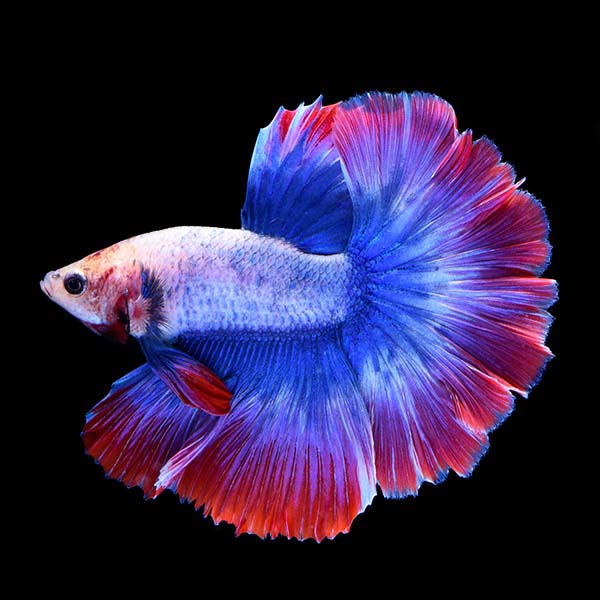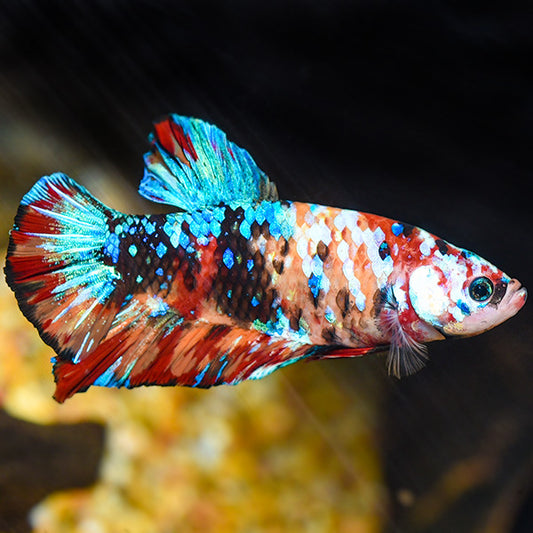The Ultimate Betta Fish Care Overview for New Pet Dog Owners
The Ultimate Betta Fish Care Overview for New Pet Dog Owners
Blog Article
Reproducing Betta Fish: a Comprehensive Step-By-Step Overview to Efficiently Raising Baby Bettas From Eggs to Their Adult Years
Reproducing Betta fish is a careful endeavor that calls for mindful planning and implementation to make certain the successful growth of fry from eggs to develop fish. As the male Betta diligently constructs a bubble nest and guards the precious eggs, the subsequent phases of care and shift need interest to detail and expertise of finest methods.

Picking Reproduction Pairs
When getting started on the trip of reproducing Betta fish, choosing the right breeding pairs is vital to attaining preferable characteristics and a healthy and balanced family tree - betta fish. The initial step in this procedure is to recognize the certain attributes you want to improve or maintain, such as color, fin kind, and body form. It is important to choose genetically varied pairs to stay clear of inbreeding, which can cause wellness concerns and unfavorable attributes
Review prospective breeding prospects very carefully. A healthy and balanced male Betta needs to exhibit dynamic colors, an active demeanor, and well-formed fins, while the lady ought to also present vivid coloration and a rounded stomach, suggesting readiness for spawning. Observing the personality of both fish is vital, as aggressive or extremely shy individuals may not reproduce successfully.
Documents of family tree is similarly important. Keeping records of the moms and dad fish's ancestry can assist you track hereditary attributes and possible issues. Additionally, seek advice from respectable dog breeders or on-line resources for assistance on picking suitable pairs. Ultimately, investing time in the option procedure will dramatically enhance the likelihood of generating solid, vibrant children that fulfill your breeding goals (betta fish).

Preparing the Reproduction Container
Producing an optimum reproduction setting is a vital step after choosing appropriate sets for Betta fish. The breeding storage tank must be especially created to offer convenience and stimulate the natural reproduction habits of the fish. Start with a storage tank size of a minimum of 10 gallons to guarantee ample space for both the male and female Bettas.
Preserve a gentle filtration system to maintain the water clean while staying clear of solid currents that can worry the fish. Additionally, an air stone can be included in supply oxygenation without interrupting the water surface area excessive.
Temperature regulation is vital; go for a steady series of 78-82 ° F(25-28 ° C) using a reputable heater. The pH degree ought to be maintained in between 6.5 and 7.5, and regular water adjustments are needed to make sure high water high quality.
Incorporate drifting plants or generating sponges to develop hiding places for the lady, while additionally motivating bubble nest building by the male - betta fish. Lastly, make certain the storage tank is devoid of sharp designs and any type of prospective hazards, as the well-being of the fish need to constantly be prioritized during this crucial stage of reproduction.
The Breeding Process
Commonly, the reproducing procedure for Betta fish includes a collection of distinct and observable actions that indicate preparedness for reproduction. click resources The male Betta begins by constructing a bubble nest at the water's surface area, which works as a website for the fed eggs. This nest is important, as it gives a secure environment for the eggs till they hatch out.
When the nest is developed, the male will show courtship habits, such as flaring his fins and exhibiting vibrant shades to attract the female. The lady, upon sensing the male's readiness, will certainly react by presenting upright stripes along her body, indicating her receptiveness.
When the women strategies, the male involves in a mating dancing, often bring about a welcome known as the "spawning." During this embrace, the lady launches her eggs, which the male feeds quickly. The fertilized eggs after that fall to the bubble nest, where the male thoroughly gathers and returns them to the nest. Following this, the male assumes duty for safeguarding the nest and ensuring the security of the eggs up until they hatch out, normally within 24-36 hours. This stage is critical in the reproducing procedure, laying the foundation for effective fry development.
Caring for Betta Fry
Caring for Betta fry requires cautious focus to their setting and nourishment to make sure healthy and balanced growth and advancement. After hatching, Betta fry are extremely tiny and susceptible, necessitating a steady and clean environment. Maintaining a water temperature between 78 ° F and 80 ° F is important, as Betta fry thrive in warm problems. Furthermore, guarantee that the water is devoid of hazardous contaminants; routine water modifications of 10-20% are suggested to keep ideal water quality.
Feeding Betta fry is just as important. They should be provided infusoria or finely smashed premium fry food, as their mouths are too tiny to handle larger fragments. As they expand, you can slowly introduce larger foods, such as infant salt water shrimp or powdered flakes, to guarantee they receive appropriate nourishment. Feed them tiny amounts numerous times a day, bewaring not to overfeed, which can lead to water high quality problems.
Transitioning to Grownup Bettas
As Betta fry mature, transitioning them to grown-up Bettas is a crucial phase that requires mindful monitoring of their atmosphere and social interactions. This procedure commonly starts when the fry reach around six weeks of age, at which factor they can be gradually presented to a more structured living environment.
To promote this transition, it is important to make sure that the water criteria-- such as temperature level, pH, and ammonia levels-- are optimum and steady. Adult Betta fish flourish in warm water (around 78-80 ° F) with a pH of read this 6.5 to 7.5. Progressively adapt Look At This the fry to these problems to reduce stress.
Social communications are one more crucial element; man Bettas are infamously territorial and aggressive. It is recommended to separate males into individual containers as they mature. Female Bettas can be housed together, yet care must be taken to keep an eye on for indications of aggressiveness.
In addition, dietary modifications should be made as the fry expand. Incorporate high-quality pellets and live foods to support their growth and health. By managing these aspects efficiently, you can advertise a successful shift to the adult years for your Betta fish.

Final Thought
Effective reproduction of Betta fish needs careful focus to information throughout the entire procedure, from choosing genetically diverse sets to offering ideal take care of fry. By ensuring ideal reproduction conditions and maintaining water high quality, the chance of healthy offspring enhances significantly. Additionally, a balanced diet regimen and steady adjustment to grown-up atmospheres are important for the development and advancement of Betta fish. Following these steps vigilantly cultivates a flourishing population of Betta fish, improving both their health and vigor.
Report this page